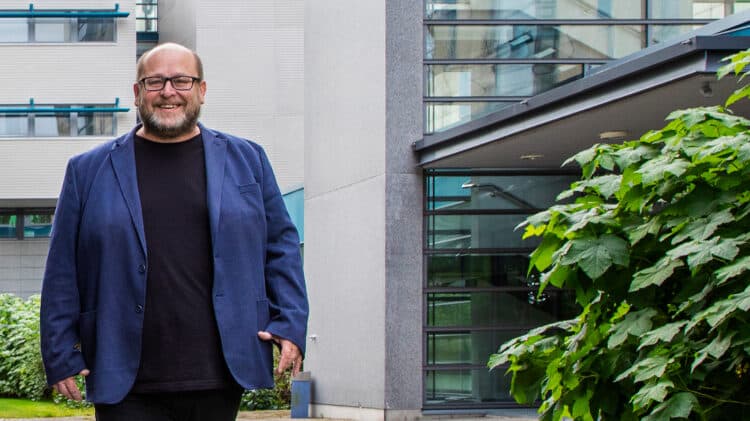
5G Test Network’s Role in 6G Development
In the first Waves magazine, we highlighted the 5G Test Network (5GTN) as a key component of the 6G Flagship initiative. Further exploration was done in 2020, as detailed in the 6G White Paper on Validation and Trials for Verticals towards the 2030s*. We emphasised the importance of validation and trial activities, especially in addressing the requirements of vertical business sectors. The focus was on mmWave and sub-terahertz technologies.
Pathways to 6G
We now identify three prongs towards the realisation of 6G:
1) the evolutionary 3GPP path,
2) the O-RAN path, and
3) the disruptive 6G path.
The first involves aligning research with 3GPP standards to facilitate immediate testing, development, and innovation. This includes applications in health, energy, industry, critical communications, and vehicular sectors, leveraging mid-band frequencies (6-15 GHz) for compatibility with 4G/5G, offering up to 100 Gbps data rates, and improving latency and jitter.
The second prong, especially popular in the US, focuses on the softwarization of networks, including O-RAN and open-source solutions. It explores energy efficiency, protocol softwarization, and performance metrics like stability, latency, and jitter control.
The third path ventures into disruptive 6G technologies, integrating sensing and imaging into radio systems and achieving terabits-per-second data rates and ultra-low latency. This enables advanced applications such as holographic communications, real-time digital twins, new industrial controls, cableless data centres, and in-chip radios.
Funding and Collaborations Driving 6G Forward
Achieving our goals necessitates worldwide collaboration in research and substantial funding for network components. Fortunately, national support is available, with the Research Council of Finland allocating over €2 million for network investments. Additionally, through the Smart Networks and Services Joint Undertaking (SNS-JU), the EU Commission supports projects like 6G-XR, 6G-Sandbox, CONVERGE and SUNRISE-6G, which aim to create pan-European federated test platforms. These platforms leverage existing infrastructures to explore new 6G use cases within a larger system. The Business Finland 6G Bridge programme further enables the development of the network and 6G applications. Projects such as EMETA focus on metaverse solutions, EWARE-6G on energy-efficient networks, and 6GTNF on next-generation network innovations.
As these activities are project-oriented, a tool for the longer-term sustainability of the research Infrastructures is needed. European Strategy Forum for Research Infrastructures (ESFRI) has accepted SLICES-RI (an effort to build a pan-European research facility currently with 15 member states and 25 research institutions in ICT, including, e.g. high-performance computing, AI/ML, wireless) to its roadmap. Eventually, when operational, the SLICES-RI should allow funding to run the federated platforms as one until the 2040s.
The Significance of 6G for Future Generations
I have been researching wireless cellular communications for nearly 30 years. The questions have been, “Why do we need 4G as we have 3G,” “Why do we need 5G as we have 4G,” and now (obviously) “Why do we need 6G as we have 5G?”.
There are always innovators and visionaries who take advantage of new capabilities to create something unprecedented. For 6G, these may include holographic real-time photo-realistic metaverses with early application in remote conferencing but extending later to real-life copies of cities or businesses. Also, more down to earth, we have taken as a driver for 6G development the United Nations sustainable development goals (UN SDGs), meaning, e.g. to connect the unconnected and looking at sustainability in terms of social, economic, and environmental sustainability. This means supporting businesses around the world in generating services that are sustainable and also taking a look at the ICT sector’s own footprint. For instance, we at 6G Flagship develop energy-aware network solutions and applications that can run year-on-year on renewables.
Since the 1980s, the University of Oulu has played a pivotal role in advancing wireless technologies, particularly since pioneering the 3G system. With over 600 experts, our ICT faculty spans the entire wireless ICT development spectrum. Significant national investments in ICT, notably the 6G Flagship programme, highlight our leadership. The Oulu region’s vibrant ICT sector, bolstered by a strong Nokia R&D presence and its sole European factory in Oulu, fosters a dynamic ecosystem. Committed to continuous innovation, we do not stop at 6G.
* Pouttu, A. (Ed.). (2020). 6G White Paper on Validation and Trials for Verticals towards the 2030s. 6G Research Visions, No. 4. University of Oulu.
About the writer
Ari Pouttu is a professor in Dependable Wireless Communications. He has scientific, engineering, and management experience in fields such as synchronization, interference suppression, coding, modulation, and multiple access. He has been involved in cellular system designs since 3G (FP4 FRAMES).
The projects under his command have resulted in system designs for positioning, defence, radar systems, and energy. Furthermore, case studies are being performed for media, sports, maritime, and the future hospital.
Currently, Pouttu serves as Vice Director of the 6G Flagship programme. He also leads 5G Test Network research activities and the strategic research area, which develops solutions for business verticals such as industry, health, energy, and automotive.